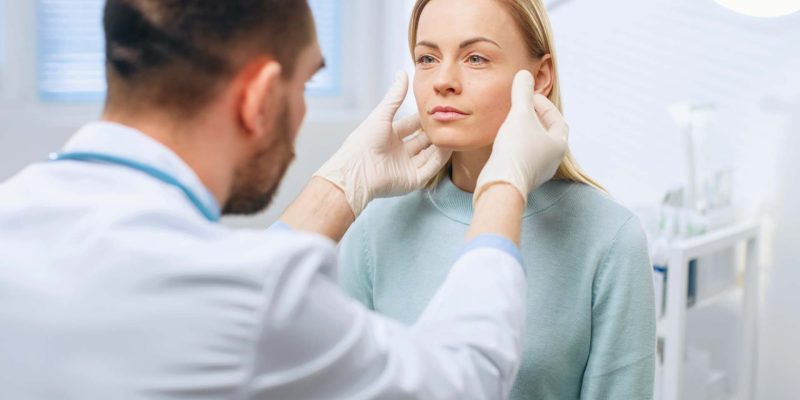Menu
Close
- Home
- About
- Services
- Back Pain Physiotherapy
- Neck Pain Physiotherapy
- Shoulder Pain Physiotherapy
- Hip Pain Physiotherapy
- Foot Pain Physiotherapy
- Motor vehicle accident physiotherapy
- Massage therapy
- Lymphatic Massage Therapy
- Neurological Physiotherapy
- Fibromyalgia Physiotherapy
- Hand Pain Physiotherapy
- Arthritis Physiotherapy
- Sports Physiotherapy
- Vestibular Physiotherapy
- Cupping Therapy
- Concussion Physiotherapy
- Worker’s Compensation Physiotherapy
- Pricing
- Blog
- Our Location
- Contact Us
The Role of Physical Therapy in Stroke Rehabilitation
The Role of Physical Therapy in Stroke Rehabilitation
Stroke is a leading cause of long-term disability worldwide, affecting millions yearly. Stroke rehabilitation is critical in helping stroke survivors regain independence and improve their quality of life. Physical therapy is a fundamental to stroke rehabilitation, improving mobility, strength, balance, and overall functional abilities. In this blog post, we will explore the vital role of physical therapy in stroke rehabilitation.



1. Early Intervention and Assessment
Physical therapy begins as early as possible after a stroke, typically in the acute care setting. First, physical therapists assess the individual’s functional abilities, strength, range of motion, balance, and coordination. Then, they work closely with the medical team to develop an individualized treatment plan tailored to the specific needs and goals of the stroke survivor.
2. Motor Function and Mobility Training
Physical therapists are crucial in retraining motor functions and improving mobility following a stroke. They focus on exercises and activities that restore movement patterns, coordination, and muscle strength. In addition, therapists utilize therapeutic exercises, gait training, balance training, and functional activities to help stroke survivors regain the ability to walk, perform daily activities, and regain independence.
3. Muscle Tone Management
After a stroke, muscle tone may be affected, leading to muscle stiffness (spasticity) or weakness (flaccidity). Physical therapists employ strategies to manage muscle abnormalities, including stretching exercises, range of motion exercises, positioning techniques, and specialized modalities such as electrical stimulation or splinting. In addition, physical therapy can enhance motor control, prevent contractures, and improve functional outcomes.
4. Balance and Fall Prevention
Balance impairments are common after a stroke and can significantly affect a person’s mobility and safety. Physical therapists use targeted exercises and balance training techniques to improve postural control, weight shifting, and coordination. They also provide education on fall prevention strategies and assistive devices to enhance safety and reduce the risk of falls.
5. Adaptive Equipment and Assistive Devices
Physical therapists are knowledgeable about adaptive equipment and assistive devices that can aid stroke survivors in regaining independence. They assess the need for mobility aids, orthotics, or assistive devices such as canes or walkers. Physical therapists also guide proper usage and fit to optimize functional outcomes.
6. Functional Task Training
Physical therapy focuses on training stroke survivors to perform everyday tasks and activities necessary for independent living. For example, therapists work on dressing, bathing, toileting, and home management tasks. By practicing functional tasks in a therapeutic setting, stroke survivors can improve their ability to perform these activities safely and efficiently at home.
7. Education and Home Exercise Programs
Physical therapists educate stroke survivors and their caregivers on strategies for maximizing recovery and managing potential challenges. In addition, they guide home exercise programs, emphasizing the importance of continued practice and exercise outside of therapy sessions. This promotes ongoing progress and helps individuals maintain functional gains.
8. Long-Term Support and Community Integration
Physical therapy does not end once a stroke survivor completes formal rehabilitation. Physical therapists can provide ongoing support and guidance for long-term management, including maintenance exercises, addressing secondary complications, and facilitating community integration. They may also collaborate with other healthcare professionals and community resources to ensure a comprehensive and holistic approach to stroke recovery.
Conclusion
Physical therapy is vital to stroke rehabilitation, focusing on improving mobility, strength, balance, and overall functional abilities. Through early intervention, motor function training, balance improvement, and functional task training, physical therapists play a crucial role in helping stroke survivors regain independence and improve their quality of life. In addition, the expertise and guidance of physical therapists throughout the rehabilitation process are invaluable for stroke survivors and their journey toward recovery.
NEW WEBSITE
LATEST EVENT

Luz Dakota
Nam nulla ipsum, venenatis malesuada felis quis, ultricies.

Jessica Alves
Nam nulla ipsum, venenatis malesuada felis quis, ultricies.

Amity Blunt
Nam nulla ipsum, venenatis malesuada felis quis, ultricies.

Maria Suarez
Nam nulla ipsum, venenatis malesuada felis quis, ultricies.
On a quest for optimum fitness?
Redwater Physical Therapy Clinic can be your friend, philosopher & guide to help you get a pain-free, energetic, healthy life.
- Copyright 2024 Red Water Physiotherapy
